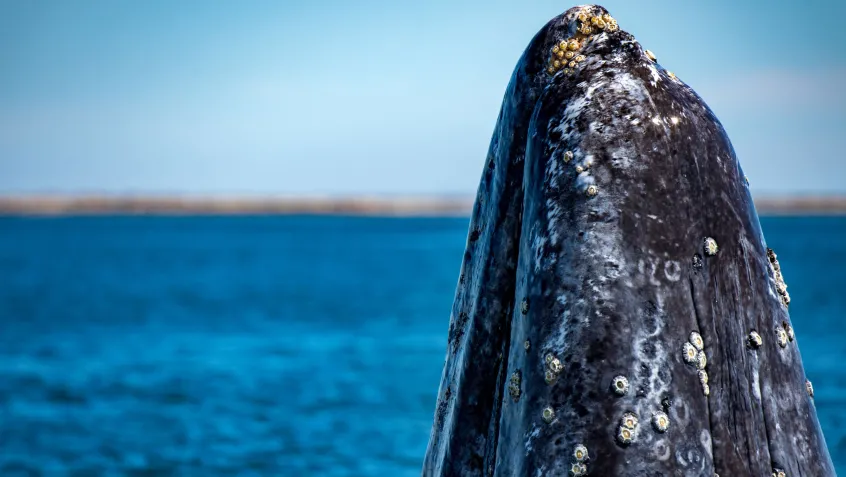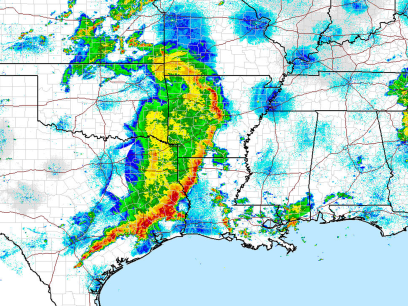
If you think migrating is for the birds, think again! Avian species aren't the only attraction during the migratory season. Some of the biggest spring migrants are pretty removed from the spotlight, but certainly not under the radar—whales! Many species of whales make seasonal moves, including humpback whales, sperm whales, blue whales, and beluga whales. If you're hoping to catch a glimpse of these spring travelers, however, your best bet is probably going to be the gray whale.
Where are the gray whales?
Once commonly found throughout the waters of the Northern Hemisphere, gray whales became extinct in the Atlantic by the early 1700s, and now can only be found in the North Pacific Ocean. Of those remaining gray whale populations, there are two major groups: the Eastern North Pacific stock, which lives along the west coast of North America, and the Western North Pacific stock, which is found along the east coast of Asia. The Eastern North Pacific stock, the group which would be more familiar to people living in the United States, generally spends its winters breeding and calving around Baja California, Mexico, and its summers feeding in the frigid Bering and Chukchi seas. As these whales travel from the icy waters around the Bering Strait down to the warmer waters of Mexico and back again, they complete one of the longest annual migrations of any mammal.
The summer months find the Eastern North Pacific stock of gray whales off the coast of Alaska, British Columbia, and the Pacific Northwest, building up their fat stores by feeding on small crustaceans living in the muddy ocean floors. These whales are bottom-feeders, sucking up sediment to strain through their baleen plates, and leaving furrows in the silt as they pan for food. In October, the whales turn south, taking two to three months to travel through the shallow coastal waters of the West Coast, reaching their destination of Baja California, Mexico, and the southeastern Gulf of California in December and January. From early January to mid-February, mating and calving occur, with pregnant whales giving birth to their young in the warm waters of shallow lagoons and bays. The calves and their mothers will typically remain here for two to three months, to allow the calves to put on enough blubber to sustain them for their northern voyage.
Springtime signals the start of the journey north for these aquatic mammals, as they complete the final leg of their roughly 10,000 mile round trip. Gray whales specifically are known for their curiosity toward boats, making their migratory path an ideal focus for whale-watching expeditions off the West Coast. No access to a ship? Don't worry—the whales' northern route sticks close to the coast, frequently making their breaching visible from the shore. To catch a glimpse of these marine giants, consider making a trip to Point Reyes National Seashore, when the best chance to see mothers and calves traveling north is in late April and early May.
To learn more about gray whales, their life cycle, and their history with humans, check out this resource from the National Park Service: Pacific Gray Whales.
Sources:
- American Cetacean Society. 2016. “Gray Whale: Eschrichtius robustus.” Accessed March 1, 2016. http://acsonline.org/fact-sheets/gray-whale/
- National Park Service. 2016. “Whale Watching at Point Reyes.” US DOI. Accessed March 1, 2016. http://www.nps.gov/pore/planyourvisit/wildlife_viewing_whales.htm
- NOAA Fisheries: Office of Protected Resources. 2013. “Gray Whale (Eschrichtius robustus).” National Oceanic and Atmospheric Administration. Accessed March 1, 2016. http://www.nmfs.noaa.gov/pr/species/mammals/cetaceans/graywhale.htm
- NOAA Fisheries: Southwest Fisheries Science Center. 2014. “Gray Whale.” National Oceanic and Atmospheric Administration. Accessed March 1, 2016. https://swfsc.noaa.gov/mmtd-graywhale/
- NOAA Fisheries: Southwest Fisheries Science Center. 2014. “Quick Facts about Gray Whales.” National Oceanic and Atmospheric Administration. Accessed March 1, 2016. https://swfsc.noaa.gov/textblock.aspx?Division=PRD&ParentMenuId=211&id=16453


